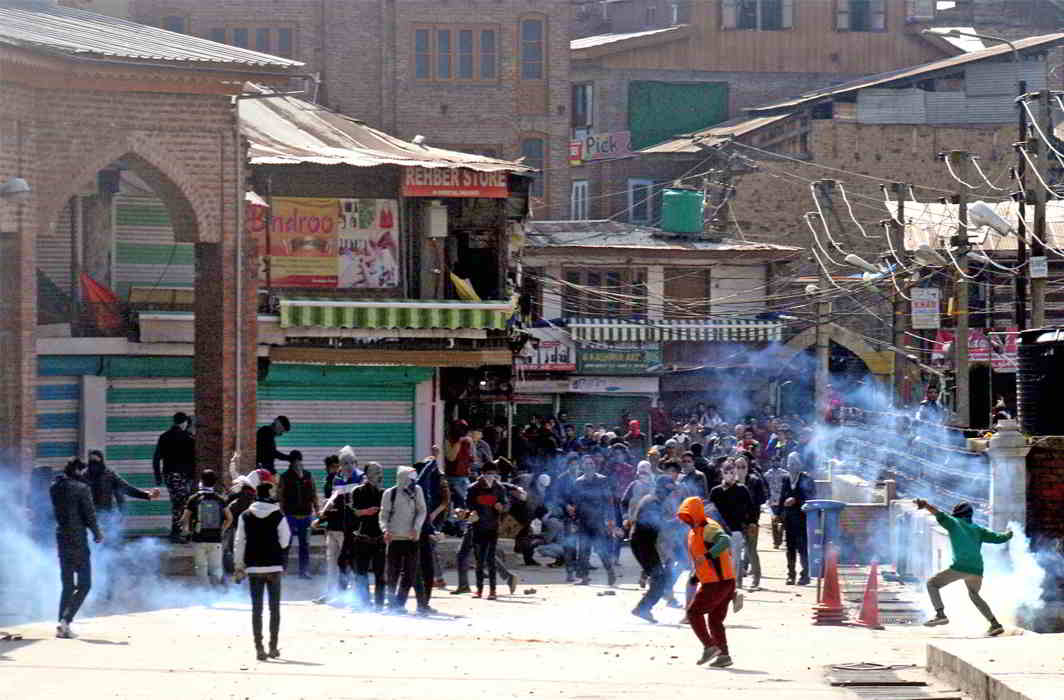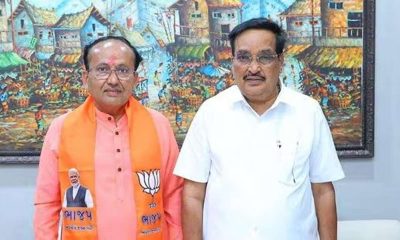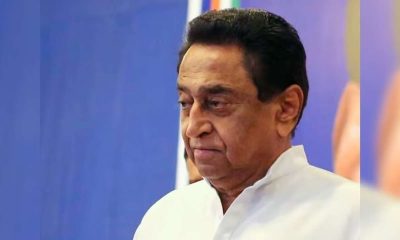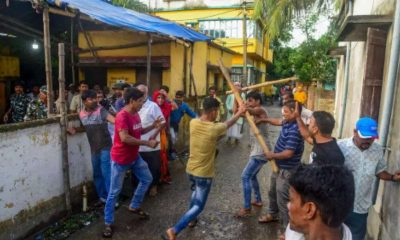India News
Unfrozen Turbulence
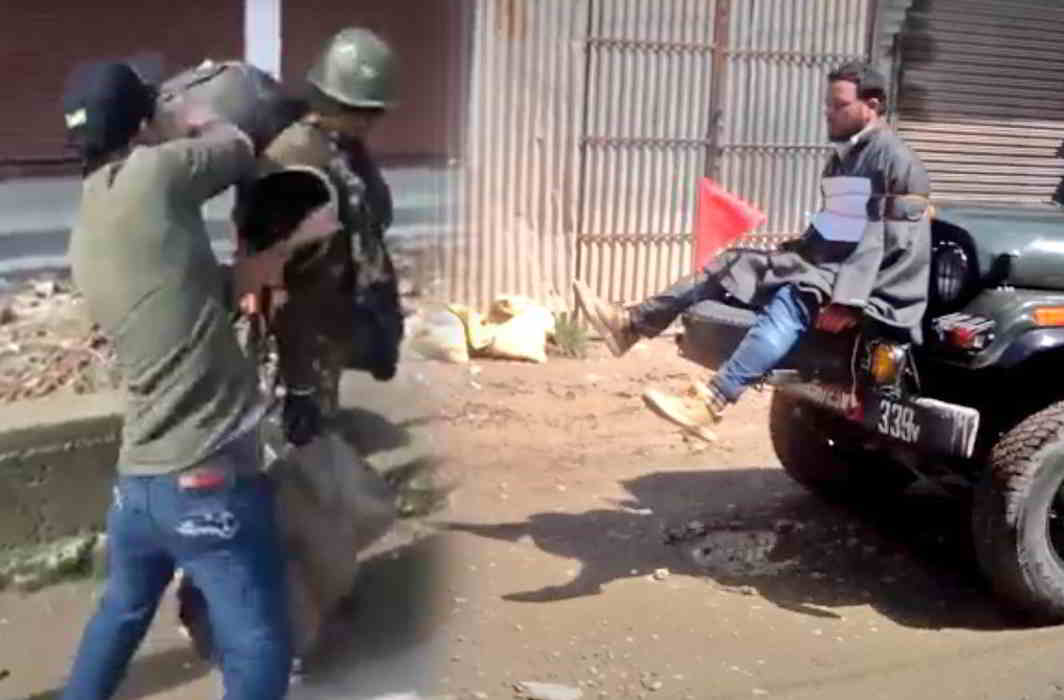
[vc_row][vc_column][vc_column_text]Only someone who has travelled in Kashmir can understand the enormity of the disaster unfolding in the Valley
By Dilip Bobb
Two videos that have gone viral are mirror images of tragedy unfolding in Kashmir. One shows CRPF jawans being abused and slapped by teenagers in Srinagar while returning from poll duty. The other shows a Kashmiri man tied to the hood of an army jeep as ‘protection’. The armymen were also returning from election duty and had to run a gauntlet of stone-pelters, the ubiquitous face of today’s Kashmir. Both images are shocking but illustrate the combustible new mood in the Valley. It represents the most serious security challenge for the Modi government, and has been since the death of Burhan Wani, the Hizbul Mujahideen commander, on July 8, last year. Security experts say that the peak of militancy in the Valley was in 1991. Judging by the hundreds of civilians who have died or been maimed protecting terrorists, there is a new peak being reached right now. Never in recent memory has the situation in the Valley looked so grim and the anger among local Kashmiris been so openly hostile and anti-Indian. Anti-Indian may be an oxymoron considering Kashmir is part of India but the reality here is so different from anywhere else that it raises no eyebrows.
Even some northeastern states like Nagaland and Manipur, where insurgency is a problem, never feel alien and threatening to a visitor, as Kashmir does. Whenever I have been in Kashmir on holiday or as a journalist, there is no missing the undercurrents, the unwritten signals that serve as a reminder that you are an outsider from ‘India’. Depending on whom you meet or are in conversation with, the tone and tenor of the word ‘India’ can range from casual contempt to barely concealed hostility. I was there last year in May, when Burhan Wani was well on his way to becoming a cult figure. I was en route to Gulmarg from Srinagar and had asked the driver of the private taxi to stop at Tangmarg so I could stretch my legs and grab a coffee. He had a companion with him in the front seat and when I climbed back into the SUV, they were engrossed in watching a video on the mobile phone. It showed a young man wearing army fatigues, armed with an AK 47 and speaking into the camera. It was obvious who it was; the man most wanted by the security forces. They were so engrossed in listening to what Burhan was saying on the video, that it took them a while to notice I was back. They hastily switched off the video but the air had decidedly turned frostier, and it had nothing to do with the fact that we were a few kilometres short of the snow-covered slopes of Gulmarg.
There must be some biblical irony in the fact that the catalyst for the start of militancy in Kashmir in 1987 and the latest outbreak of violence in which eight protestors died and hundreds of policemen were injured, features Farooq Abdullah as a common denominator. It is universally accepted that the trigger, literally, for the rise of militancy in the Valley was the rigged election of 1987 which consolidated Farooq’s reign as chief minister. Now, 30 years later, the same Farooq Abdullah is contesting the Srinagar Lok Sabha bypoll which registered a two percent voter turnout during the repolling exercise. It has come full circle in Kashmir. The start of militancy in 1987 stemmed from the sense of betrayal the locals felt at a fraud election which legitimised Farooq’s reign, backed by Rajiv Gandhi’s Congress. It was seen an ‘unholy alliance’. The reasons behind the current upsurge in violence in the Valley has much to do with the alliance currently in power, Mehbooba Mufti’s PDP and the BJP, also derided by locals as an unholy alliance.
Whether Srinagar or Baramulla, everyone I met, from hotel staff to shopkeepers, porters and tourist-related operators, were polite and formal but never failed to convey the not-so-subtle statement that you were from another country. That sentiment accompanies you like an unfriendly shadow on your journey through the Valley. On earlier visits, this was extant as well, but this time, I could sense a difference in mood and hostility. Before June 2016, you could not imagine teenagers being so brazen and defiant so as take on armed members of the security forces in the middle of Srinagar, knowing reinforcements are a wireless call away. There is clearly a different and more dangerous flammable mix that defines Kashmir today. Most people, who visit this exceptionally beautiful part of the country, have had the good fortune of meeting locals who treat you with genuine warmth and a degree of hospitality which is exceptional. Sadly, such people are rarer to find. Currently, it has descended into a Palestine-like intifada spearheaded by teenagers with no ideology or geo-political vision, just a bleak future thanks to lack of jobs and inspiration from videos of Pakistan-backed militants like Burhan Wani, and now his clones. The image of the reckless revolutionary (shades of Che Guevara) fighting for the sake of an imaginary homeland is a powerful one, and it is fuelling the uprising in Kashmir to new and incendiary levels.
At various points in the Kashmir narrative, security experts and journalists have spoken or written of new peaks of militancy, throughout the 90s for instance. This time, it is for real. This time, it cannot be blamed on Pakistan, like every government has done so far. Pakistan is a player in the Kashmir tragedy, always has been and always will be, but the anger and hostility I witnessed—and it has only grown since—is much more visceral. The fact of civilians openly protecting terrorists during military operations, risking their own lives, is a new and dangerous escalation in the battle against militancy. It’s a battle that the Modi government is losing, and losing badly, largely through neglect and inaction. Atal Behari Vajpayee’s clarion call of Insaniyat (humanism), Kashmiryat (tradition of Hindu-Muslim amity) and Jamhooriat (democracy) has been abandoned in favour of a macho, Rambo-style response. It is a strategy that can only lead to greater alienation. The battle in the Valley is not about terrorism or Pakistan. It is about large and growing sections of the civilian population in Kashmir who are being forced to choose sides. It’s a battle that the Indian government is in danger of losing by default.[/vc_column_text][/vc_column][/vc_row]
2024 Lok Sabha Elections
Lok Sabha election 2024: Nearly 50% voter turnout recorded in second phase till 3 pm
The constituencies going to polls today include all 20 Lok Sabha seats in Kerala, 14 in Karnataka, 13 in Rajasthan, and others spread across different states.
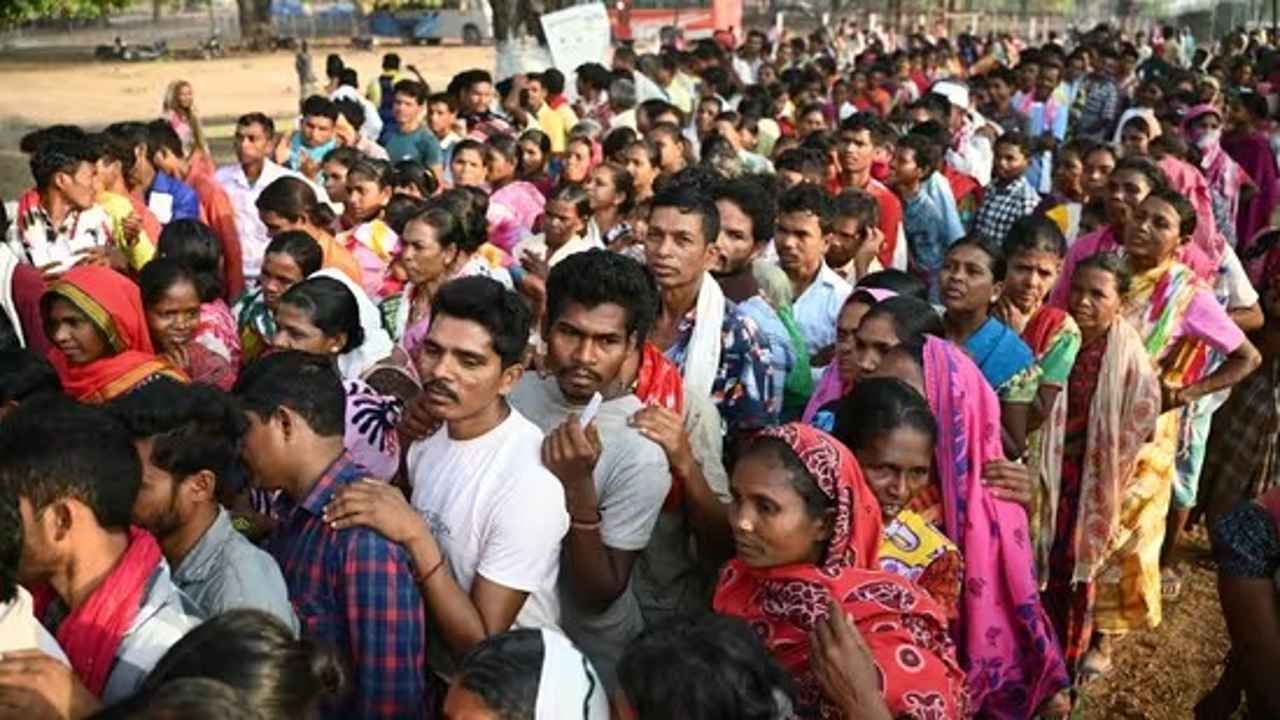
In the second phase of Lok Sabha elections 2024, over 50% of voters were registered in 13 states and the UTs till 3 p.m. 65% of voters participated in the first round of the Lok Sabha elections.
The 18th Lok Sabha elections are currently in their second phase, with voting for 88 seats taking place across 13 states and union territories. There are more than 1,200 people running for office, four of them are from outside Manipur.
Union minister Rajeev Chandrasekhar, BJP members Tejasvi Surya, Hema Malini, and Arun Govil, Rahul Gandhi and Congress leader Shashi Tharoor, DK Suresh, the brother of Karnataka Deputy Chief Minister DK Shivakumar, and former chief minister HD Kumaraswamy are among the notable contenders for the second phase.
In 2019, the NDA had won 56 of the 89 seats and the UPA 24. Six of these seats have been redrawn as part of the delimitation exercise.
The first phase of the seven stages of the elections took place on Friday, including 102 seats spread across 21 states and Union territories. Voter turnout was about 65.5% in the first phase, according to the reports.
In biggest festival of democracy, people from all walks of sector took part in it. A video went viral where former India captain and current Indian team head coach Rahul Dravid and former India player and head coach Anil Kumble were seen standing in line to cast their vote.
Meanwhile, voting started at 7 a.m. and will end at 6 p.m. The Election Commission has extended voting hours for those who are in line by an hour. According to Election Commission figures, the first two hours saw a 9.3% voter turnout throughout the 88 constituencies. By 9 am, Kerala had recorded 8.52%, Karnataka 9.21%, and Madhya Pradesh 13.82%.
In this phase, there were about 15.88 crore eligible voters, comprising 5.929 third-gender electors, 8.08 crore males, and 7.8 crore women. 3.28 crore young voters, aged 20 to 29, are among them; 34.8 lakh of them are first-time voters.
2024 Lok Sabha Elections
Lok Sabha elections 2024: 102-year-old man walks to polling booth to cast his vote in Jammu
The lowest voter turnout so far was noted in Ramgarh at 1.53%.

A 102-year-old man showed up at a Jammu polling place to cast his vote in the second phase of the Lok Sabha elections on Friday. Haji Karam Din arrived at the Reasi district polling place in the Jammu constituency with a walking stick in hand and a family member who assisted him with the pre-voting process.
Haji Karam Din, who is 102-year-old, showed his inked finger and posed for pictures outside the polling booth after casting his vote. He said voting at this polling place at this age makes him very happy. He has always cast his vote. Even at the age of 102, this experience is still ongoing, he said.
Reasi district is a part of the Jammu parliamentary constituency, and 22 candidates are up for vote with around 17.81 lakh eligible voters.
BJP’s sitting member Jugal Kishore Sharma is aiming for a third term in office following wins in the elections of 2014 and 2019. Former minister and Congress candidate Raman Bhalla is his main opponent.
Voting in the Jammu-Reasi Lok Sabha constituency began with eager voters showing up at the polling places. Some of them were wearing traditional Dogra attire.
In 2,416 polling places around the constituency, voting got underway at 7 a.m., and 10.39% of the total votes were cast by 9 a.m. In the 2019 Lok Sabha elections, Jammu recorded a 74% voter turnout.
Following the repeal of Article 370 and the division of the former state into two Union Territories five years ago, this is Jammu’s first significant election.
The Akhnoor segment received the highest percentage of votes, 14.24%, followed by Reasi (14.13%), Gulabgarh (13.53%), Shri Mata Vaishnodevi (12.71%), Marh (12.31%), Samba (8.56%), R S Pura Jammu South (8.17%), and Suchetgarh (5.67%), according to the officials. Ramgarh recorded the lowest voter participation of 1.53% so far.
Low attendance was observed in the border areas of the districts of Jammu and Samba till nine in the morning, according to poll data.
The officials said that big lines of voters were observed at several polling places throughout Jammu city. Voters were observed heading towards polling places early in the morning.
India News
Salman Khan house firing case: NIA interrogates arrested shooters Sagar Pal, Vicky Gupta for three hours

The investigation into the shocking firing incident that took place outside Salman Khan’s house on April 14 keeps bringing new updates with every passing day. In this case, Sagar Pal and Vicky Gupta, the two suspected shooters, have already been taken into custody.
The two shooters have reportedly been questioned by the National Investigation Agency (NIA), according to a new development. Every day that goes by, more information is revealed about the inquiry into the shocking firing incident that happened outside Salman Khan’s house on April 14. Sagar Pal and Vicky Gupta, the two accused shooters, are being held in custody after their first arrests.
It was recently discovered that the two shooters were questioned by the National Investigation Agency (NIA).
NIA has reportedly begun questioning Sagar Pal and Vicky Gupta, who were detained a few days ago for firing openly outside Salman Khan’s Galaxy Apartments in Mumbai, according to a recent update posted on their X (Twitter) account. NIA has interrogated shooters Vicky Gupta and Sagar Pal, arrested in the firing case, the tweet said.
According to the reports, two Punjabi residents were taken into custody by the Mumbai Crime Branch yesterday on suspicion of being involved in the recent shooting incident outside the house of Bollywood actor Salman Khan.
The two men, Sonu Subhash Chander and Anuj Thapan, provided guns to Sagar Pal and Vicky Gupta, the shooters, according to information released by the Mumbai Crime Branch. It was also reported that they had communication with the Bishnoi gang. For those who don’t know, hours after the incident, Anmol Bishnoi, the brother of gangster Lawrence Bishnoi, allegedly took credit for the firing in a Facebook post.
The shooters’ custody has been extended by Mumbai’s Esplanade Court until April 29.
Meanwhile, on the workfront Salman Khan was last seen in Tiger 3 alongside Katrina Kaif.
-
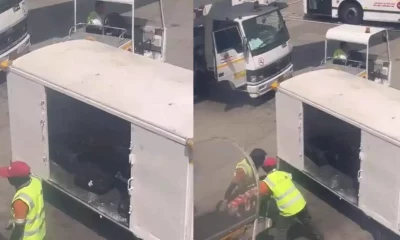
 Trending24 hours ago
Trending24 hours agoSocial media user shares video of Air India ground staff throwing expensive musical instruments, video goes viral
-
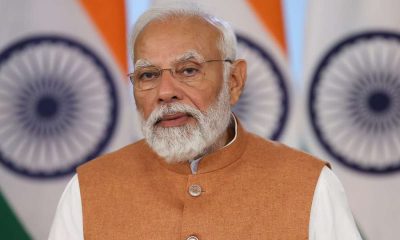
 2024 Lok Sabha Elections8 hours ago
2024 Lok Sabha Elections8 hours agoPM Modi calls for high voter turnout in second phase of Lok Sabha elections 2024, says your vote is your voice
-
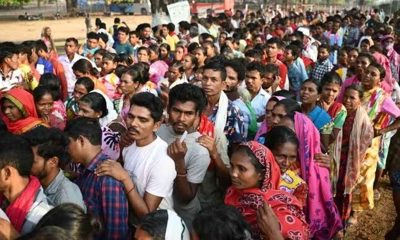
 2024 Lok Sabha Elections3 hours ago
2024 Lok Sabha Elections3 hours agoLok Sabha election 2024: Nearly 50% voter turnout recorded in second phase till 3 pm
-
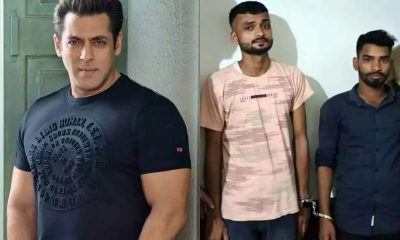
 India News7 hours ago
India News7 hours agoSalman Khan house firing case: NIA interrogates arrested shooters Sagar Pal, Vicky Gupta for three hours
-
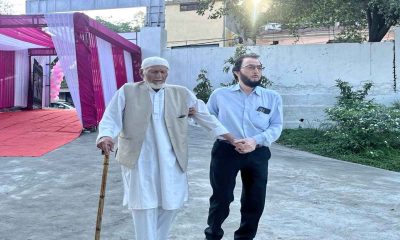
 2024 Lok Sabha Elections6 hours ago
2024 Lok Sabha Elections6 hours agoLok Sabha elections 2024: 102-year-old man walks to polling booth to cast his vote in Jammu
-
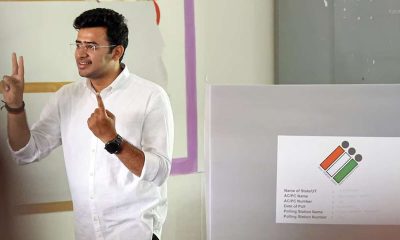
 2024 Lok Sabha Elections1 hour ago
2024 Lok Sabha Elections1 hour agoElection Commission books BJP MP Tejasvi Surya for seeking votes in the name of religion

